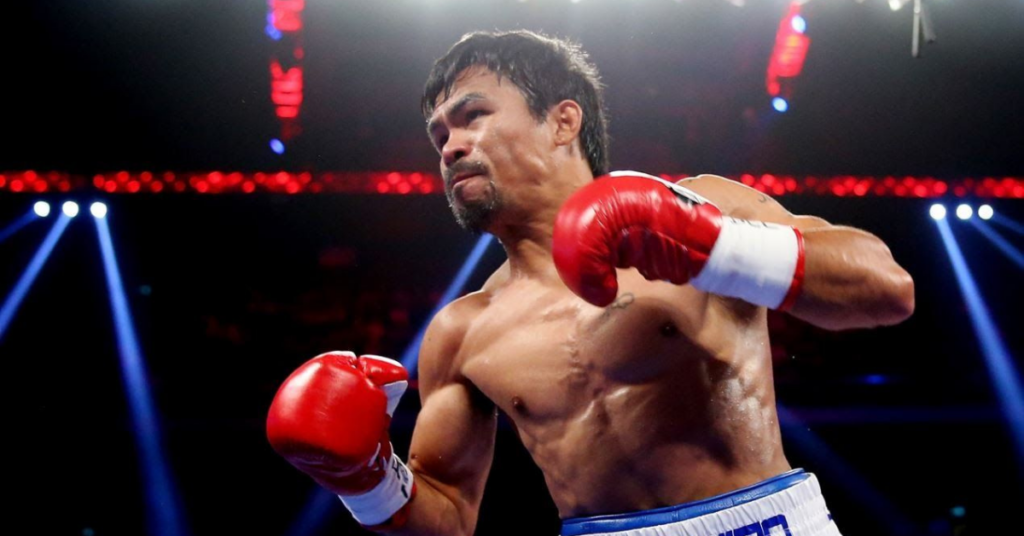Pencak Silat: The Indonesian Martial Art
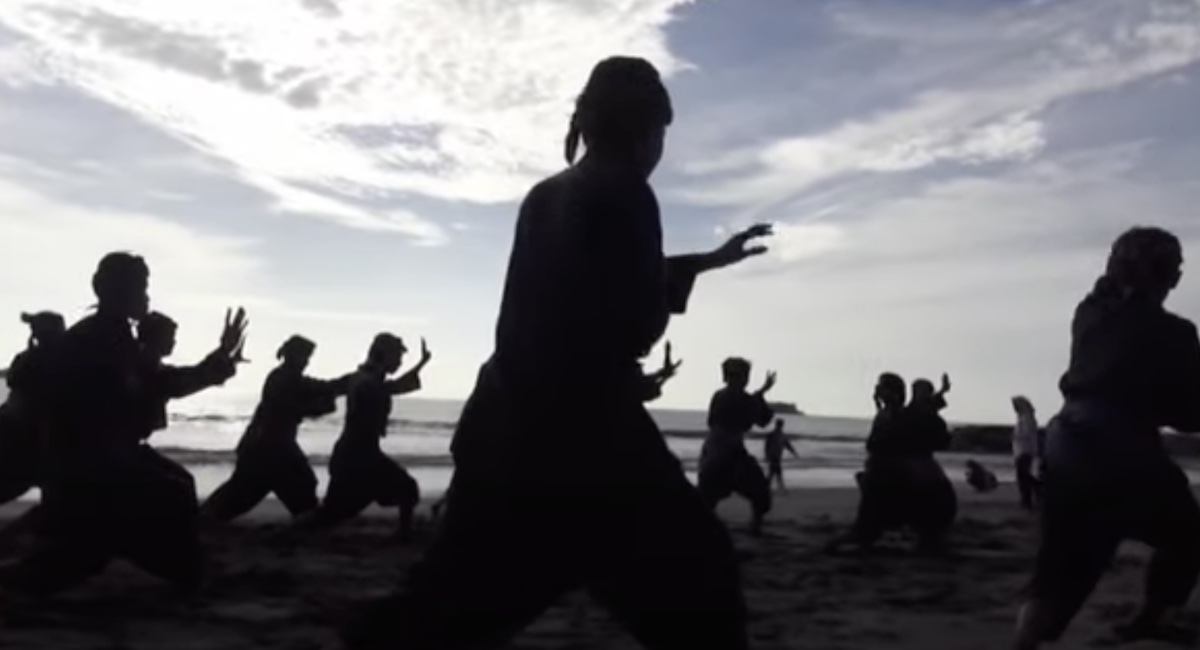
In Indonesia, a fighting style called Pencak Silat has proven to be effective. You may have seen this fighting style portrayed in various popular action movies that were produced within the region.
Pencak Silat has a rich history; we want to tell you a little about this effective style. Read below as we detail the history of Pencak Silat and the various styles that have evolved over time.
What is Pencak Silat?
Pencak Silat, or Silat for short, is an umbrella term that encompasses numerous styles that use the name. It was developed in Indonesia, but numerous southern Asian countries practice forms of this martial art.
It is a well-rounded fighting style that includes punches, kicks, throws, takedowns, submissions, and weapon use. Each of the hundreds of Silat styles teaches a variation of these techniques.
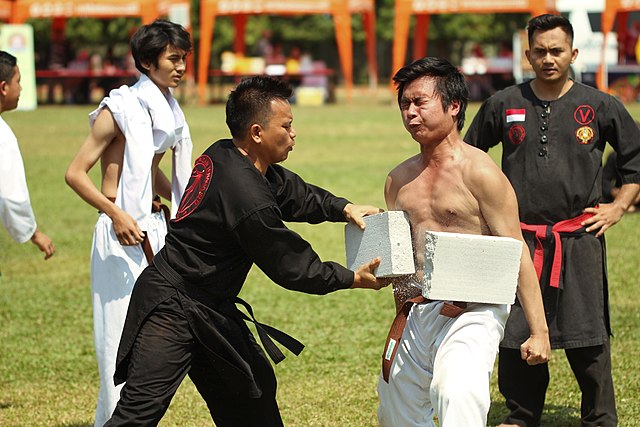
The History of Pencak Silat
The history of Pencak Silat dates back centuries. It was developed in Indonesia, where “Silat” is used as a collective word for indigenous Indonesian martial arts.
An oral history of Indonesia and southern Asia indicates that these styles began with the arrival of Aji Saka: the primordial king of Java, which at its height, went from India to Java.
Aji Saka was known as a skilled swordsman and master of open-handed techniques. There are many depictions and records of the skill of Saka and his soldiers. From the sixth century on, the styles of Silat would gradually develop.
During the 17th century, European nations began being exposed to styles of Silat due to the spice trade. Several nations under the orders of the East India Trading Company would begin occupying Southern Asia.
Many natives, who were Silat practitioners, would fight the invading Europeans. Although, through these conflicts with European nations, there would be a proliferation of new Silat styles.
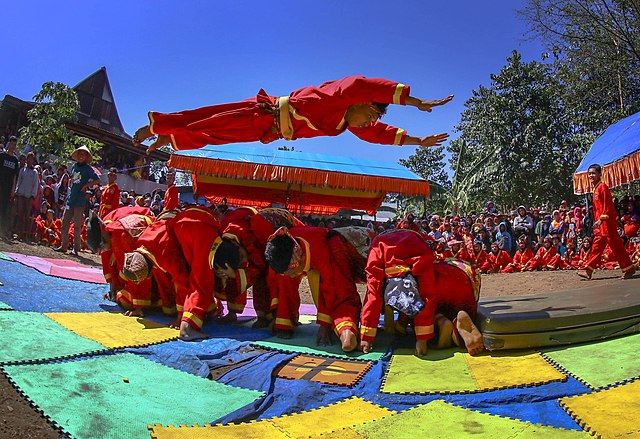
Modern Silat
In 1948, the term Pencak Silat was solidified to group together the native Indonesian fighting styles. Along with the coining of the term, the Indonesian Pencak Silat Association (IPSA) formed and is still running to this day.
Organizations like the IPSA would gradually begin to create Silat into a fighting sport. In Indonesia, Pencak Silat is taught in all schools as an extra-curricular event.
Pencak Silat has a similar place in Indonesia as Muay Thai in Thailand. It is ingrained into the Indonesian culture as both a national sport, as well as a national martial art.
The Styles of Pencak Silat
There are over hundreds of Pencak Silat styles that are practiced throughout the world. It would be nearly impossible to name all of Silat’s sub-genres as new styles are constantly being created.
But out of the hundreds of styles, they come from 12 specific styles of Pencak Silat.
- Betawi: Created in Jakarta, and is known for its swift and subtle movements.
- Minangkabau: Minangkabau is a Silat style developed in West Sumatra, Indonesia. It’s known for its graceful movements and hand gestures.
- Javanese: Javanese was developed on the island of Java. It’s known for its powerful strikes and emphasizes the importance of self-defense.
- Sunda: Another style of Silat that was developed in West Java. This style has a particular emphasis on submissions and circular movements.
- Bali: Balinese Silat has an emphasis on dynamic footwork and acrobatic movements.
- Cimande: Cimande Silat is a West Java style of Silat that has an emphasis on counter-attacks.
- Perisai Diri: Perisai Diri was developed for real-life self-defense situations.
- Tapak Suci: A style of Silat that includes spiritual aspects, meditation, and energy manipulation.
- Serak: A Silak style known for its close-quarter techniques and unique circular hand movements.
- Harimau: Harimau, also known as Tiger Silat, is inspired by the movements of a tiger, like in the Kung Fu style of Tiger Claw.
- Bukti Negara: Bukti Negara was developed by Dan Inonsato in the US, a friend and student of Bruce Lee.
- Kuntao Silat: Kuntao Silat mixes techniques from Chinese Kuntao with Pencak Silat
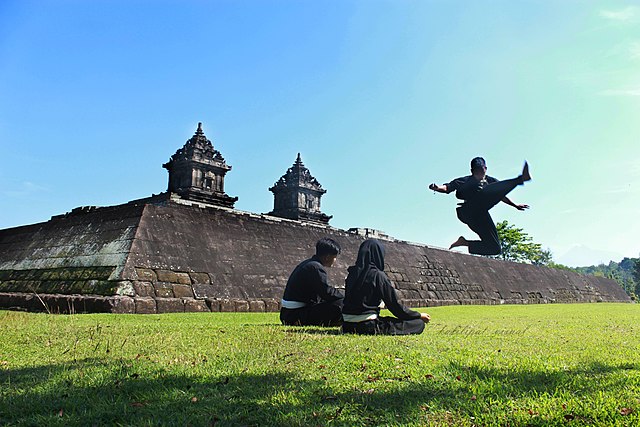
The Techniques of Pencak Silat
The techniques of Pencak Silat are made up of various different groups. Each of the numerous Silat styles uses one or all of these types of techniques within their style.
- Hand Strikes
- Pukulan: Punching Techniques
- Tepak: Open-handed Strikes
- Tumbuk: Hammerfist Strikes
- Sapu Tangan: Slapping Strikes
- Kicking Techniques
- Tendagan: Front Kicks, Roudhouses & Spinning Kicks
- Sikut Kaki: Elbow Kicks(Kicks where the blade of the foot is used)
- Tangkisan: Kicking Defense Techniques(Blocks & Checks)
- Grappling Techniques
- Kunican: Joint Locks
- Kurungan: Trapping Techniques
- Gulat: Throws, Takedowns, & Sweeps
- Bantigan: Slamming Technique
- Weapon Techniques
- Evasion & Footwork
- Counters & Parries
- Jurus: Forms that are practiced in styles of Silat
- Energy Manipulation & Breathing
The Weapons of Pencak Silat
Thirteen different weapons are used within the style of Pencak Silat. Each with their own Indonesian name.
- Toya: a bo staff made from a rattan tree, metal, or another type of tree.
- Tombak/Lembing: A spear of javelin that is made of bamboo.
- Parang: A machete-like blade with a length of anywhere between 10 to 36 inches.
- Golok: A large cleaver that can also range in size from 10 to 36 inches.
- Pisau: A short knife that is often dual-wielded.
- Kris: A double-edged dagger made from metal folded together and washed in acid.
- Celurit: A sickle that was used for farming, much like the kama in Japan.
- Tongkat/Galah: A hard and short stick or cudgel
- Pedang: A single-edged Indonesian sword.
- Klewang: An Indonesian single-edged sword that’s slightly curved. Generally measuring between 15 to 35 inches.
- Chabang: A short-handed Indonesian trident.
- Selendang: A durable silk piece used for strangling, gripping, and whipping.
- Kerambit/Karambit: A small curved knife that resembles a claw.
Pencak Silat Ranking Systems
There is no formal ranking system used within all forms of Pencak Silat. Each of the numerous styles uses its own ranking system.
Some of the types of ranking systems include:
- Uniforms & Accessories: Some Pencak Silat styles use different uniforms and accessories to separate the rank of the students. It could be anything from different colored uniforms, designs, or badges.
- Titles & Names: Some styles use different names and titles to indicate their practitioner’s level.
- Guru-Student Relationship: Like in numerous styles of Kung Fu, many forms of Pencak Silat have a guru-student relationship. The master would teach their style to their student for years until they award their student with the title of teacher.
- Oral & Traditional Recognition: In some communities, Silat teachers will create an event to recognize a student’s advance in rank. They often have to rehearse and demonstrate their abilities before their teacher promotes them.
The Format of a Pencak Silat Competition
Since there are numerous styles of Silat practiced throughout Malaysia and the world, they have different competition formats. Although, the competitions have similar criteria.
- Scoring Systems: Points are awarded for successful techniques, including strikes, throws, and takedowns.
- Equipment: Silat athletes generally wear their competition uniforms, gloves, and protective equipment like shin guards.
- Weight Classes: Athletes are separated by weight classes in all forms of Silat competition.
- Duration: Silat sparring competitions are made up of a round format. Anywhere from 3-5 rounds that last between 2-3 minutes each.
- Fighting Areas: Competitions usually take place in either a ring or a big mat, like a Karate or BJJ competition.
- Ways To Win: Ways to win a Pencak Silat match include knockout, points, or a referee’s decision.
- Fair Play: Competitors are expected to abide by a code of conduct and show respect to their opponents and officials. Any sign of disrespect could lead to an immediate disqualification and possible suspension.
- Illegal Techniques: In Silat competitions, groin strikes, eye gouges, and strikes to the back of the head are prohibited.
- Referees & Judges: Matches are overseen by a referee and judges sitting next to the scoring table.
- Culture Elements: Like in Thai boxing, some forms of Silat competitions will have traditional music playing, along with ceremonial dances.
The World Pencak Silat Championships
Since 1982, the World Pencak Silat Championships has been put on by the PERSILAT: The top Pencak Silat organization in the world.
They put on this competition every two years that has predominantly taken place in Jakarta, Indonesia. Malaysia, Singapore, and Thailand have also hosted the World Pencak Silat Championships.
The first world championship included seven different countries. As PERSILAT continued putting on the event, over 40 nations are now represented at the championship.
PERSILAT breaks down its event into four different categories of competition.
- Tanding (Match)
- Tunggal (Single)
- Ganda (Double)
- Regu (Team)
Indonesia currently leads the total medal count with Vietnam, Malaysia, Singapore, and Thailand.
The Raid Movies & Pencak Silat
Styles of Pencak Silat saw a rise in popularity during the 2010s thanks to the success of The Raid movies which follows an Indonesian police officer that uses his Silat skills to defeat drug lords. They’re considered two of the best action movies of the last 30 years.
Is Pencak Silat Worth Learning?
Many effective forms of Pencak Silat are worth learning. They’re well-rounded fighting styles that will help improve your self-defense skills. You probably won’t have the skills of Rama from The Raid, but you’ll be more than capable of taking care of yourself.


